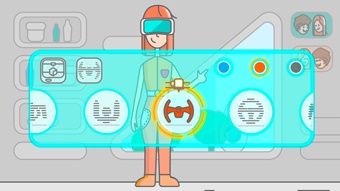Microscopes have helped scientists for more than 400 years. Since then, the technology inside them have developed greatly, but for the most part they are still expensive, but 3D printing is the solution. Imagine yourself as a researcher in Africa with no access to such instruments. Well, unfortunately this was the case for Tom Baden, a neuroscientist from the University of Sussex, and his colleague André Maia Chagas.
Create Your own Microscope for Under $120
Working together, Baden and Chagas created a microscope that is capable of imaging, tracking and even controlling the objects observed by a light source. Their FlyPi equipment is made of 3D printed parts, a Raspberry Pi microcomputer, LED lights and web cameras. The best part of it is that the total price is around $116, so it’s not only functional, but also affordable. Schools and makers can try their hand at the DIY FlyPi using these guidelines, which the scientists have published online.
Turning a Smartphone into a Microscope
The interest of microscopes is strong not only amongst professionals, also hobbyists and students who want to try the modern technology of 3D printing by making different extensions or spare parts for microscopes. In 2014 a worker at the Pacific Northwest National Laboratory in Richland, WA, 3D printed smartphone clips, which allows turning almost any phone into a 100x, 350X, or even a 1000x microscope. So you can not only explore samples, but also take photos and videos of any process.
友達とシェア :






